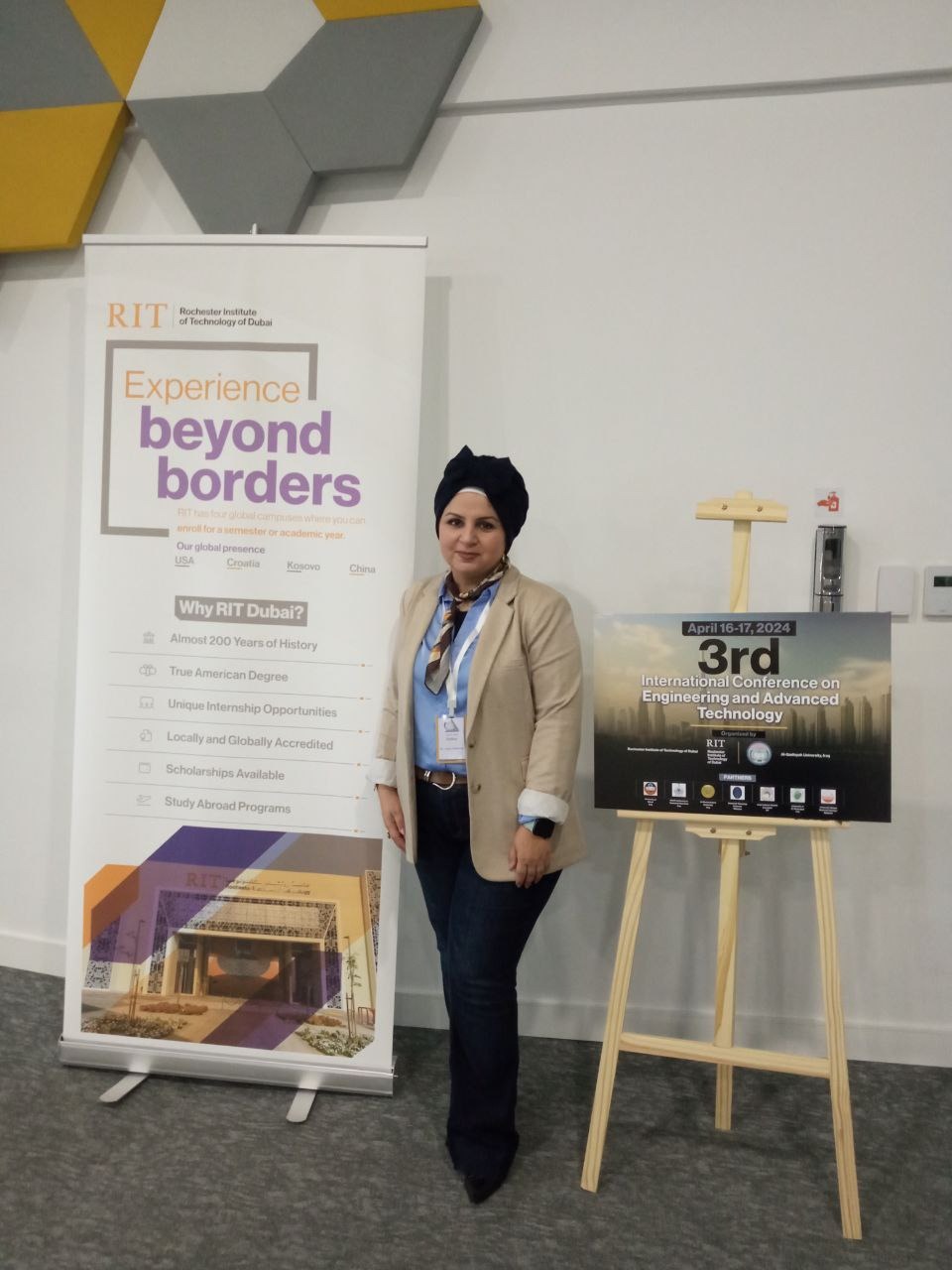Visitors: 5632028 Views
Done By: Department of Biomedical Engineering
Post Date: 2024-04-17
Last Browse: 2024-05-18

Dr. Aseel Mohammed Ali Hussein from the Department of Biomedical Engineering, College of Engineering, University of Al-Nahrain, participated in the attendance of the 3rd International Conference on Engineering and Advanced Technology, held in Dubai in collaboration with the Rochester Institute of Technology (RIT) from April 16-17, 2024. The participation in the conference was within the axis of biomedical engineering research with two research studies. The first study titled: "The Incidence of Foot Deformities and Potential Risk Factors Among Adults." This study aims to determine the prevalence of foot deformities among adults who do not suffer from visible foot deformities, in addition to studying the impact of various factors, including body mass index (BMI), foot dominance, and foot loading, on foot deformity. In this study, 200 participants with normal feet, without any significant deformities, participated. A podoscope was used to examine the foot of each participant, and impressions were used to classify their feet as either normal or deformed. This study revealed the prevalence of foot deformities among healthy adults who do not suffer from visible foot deformities. A total of 100% of the participants were involved in this study, and it was found that 32% of them were classified as having deformed feet among a group of healthy adults. The relationship between leg dominance and foot deformity was studied. The results showed that BMI had a greater effect on the front and back areas of the foot compared to the midfoot. Foot deformities are significantly more prevalent among obese adults. Improper foot positioning may permanently affect the mechanical alignment and dynamic performance of the lower limb, leading to various foot deformities-related conditions. The second research was conducted by Master's student Israa Khalifa Meehan titled: "Assessment of Spinal Alignment based on a Modified Sagittal Spine Postural Classification." This study aims to present various techniques for accurately measuring the angle and shape of the spine in both the frontal and lateral planes while assessing spinal alignment. Several diagnostic procedures have been developed to test spinal movement, function, and curvature. Different techniques used in this field include the use of tools such as angle gauge, vertebral gauge, inclinometer, goniometer, and digital inclinometer, in addition to imaging methods such as X-rays, CT scans, and MRI. However, most of these methods show either limited accuracy or reliability, in addition to the high costs and potential risks associated with radiation exposure for the patient. This article provides a comprehensive evaluation of several studies and researches that have studied the validity and reliability of the Spinal Mouse device as a portable, non-radiating, non-invasive, and easy-to-use tool. Moreover, the examination with this device is efficiently performed within a short period of time. The current research study relies on a series of previous studies conducted between 2012 and 2023 to evaluate the effectiveness of the Spinal Mouse in assessing spinal curvatures, movement, and functions.